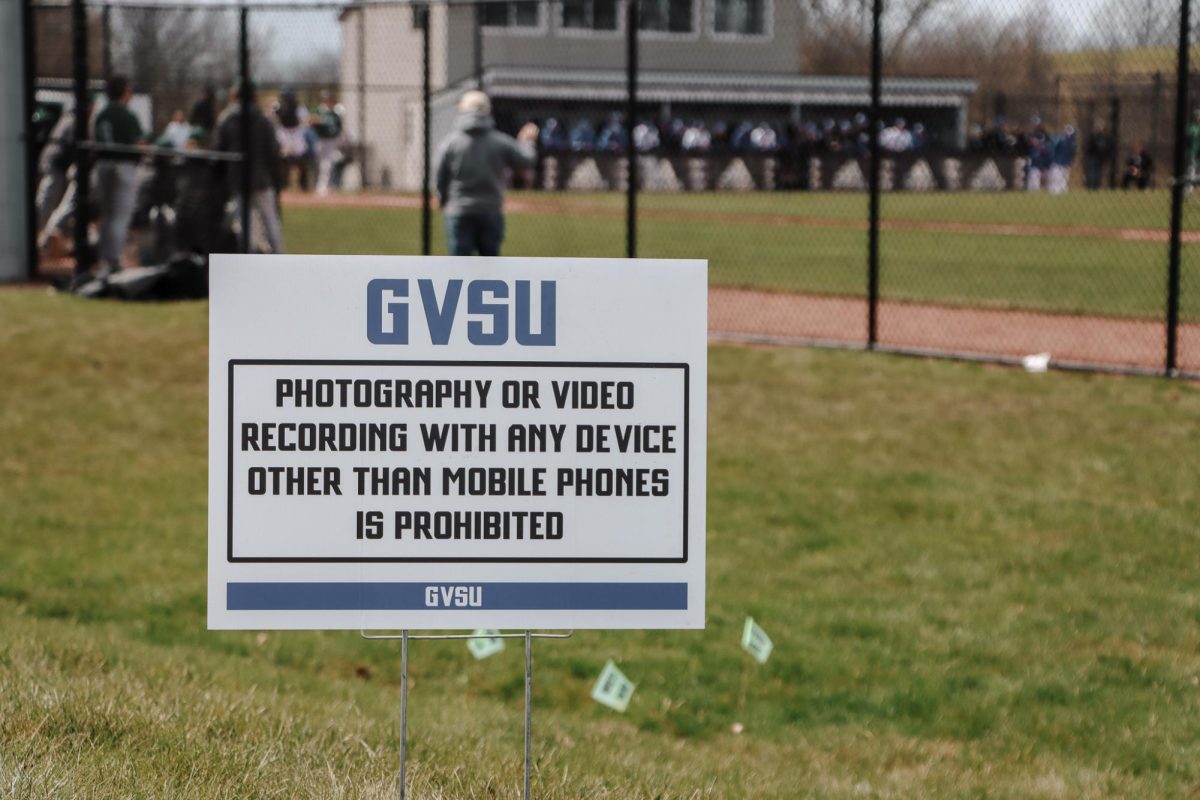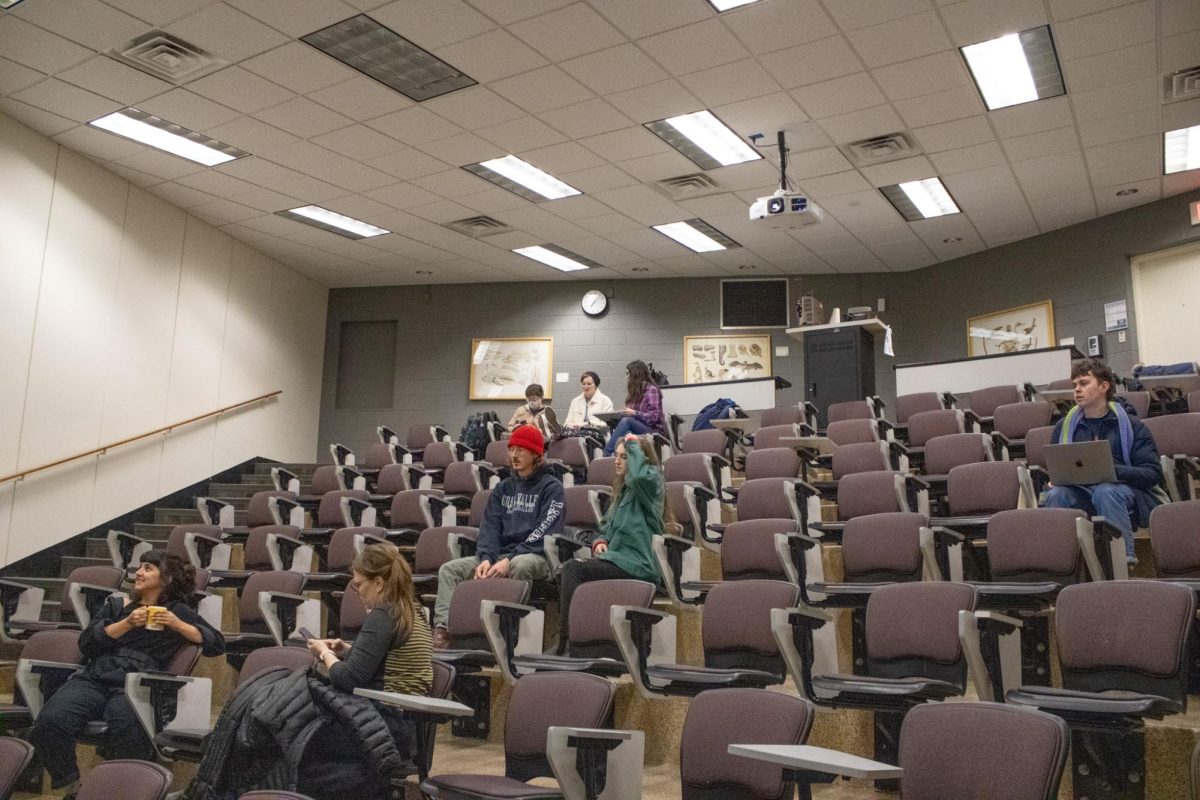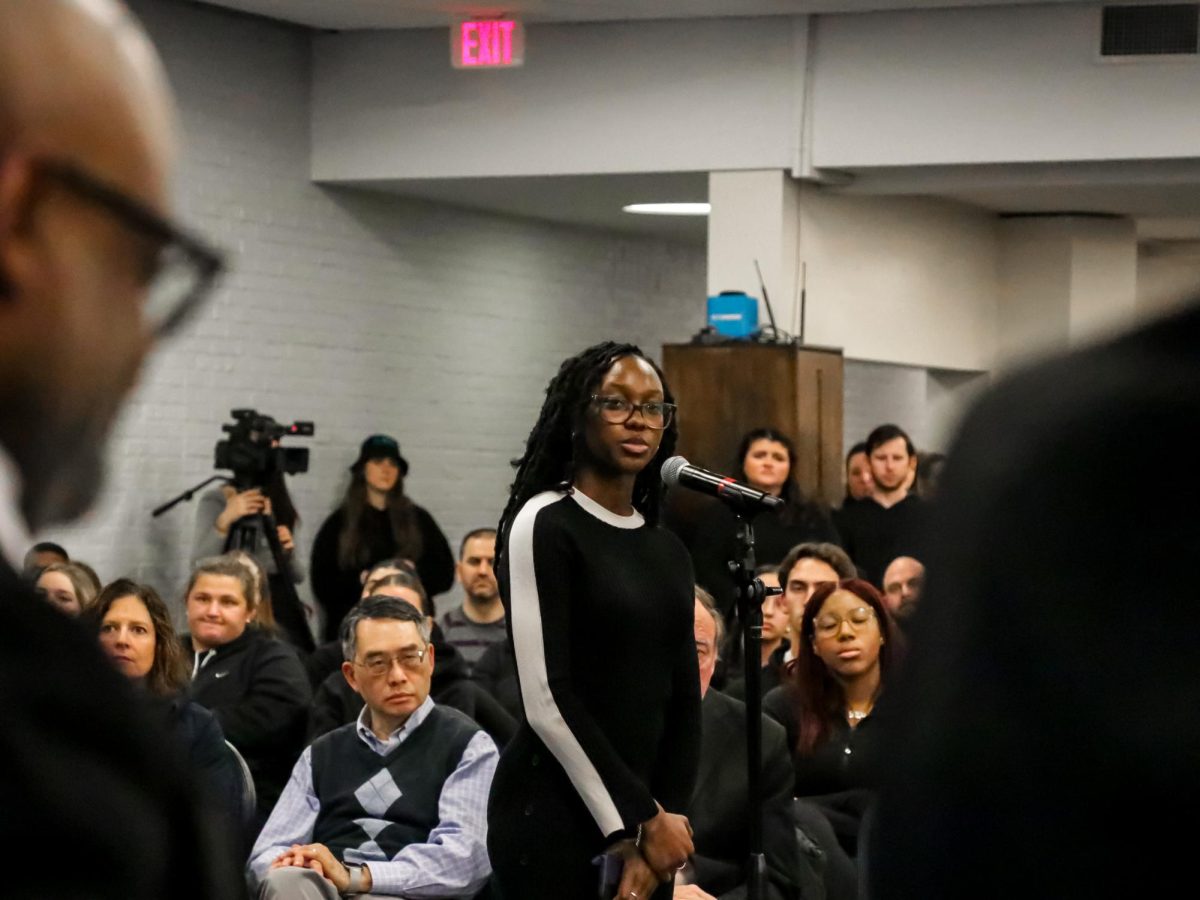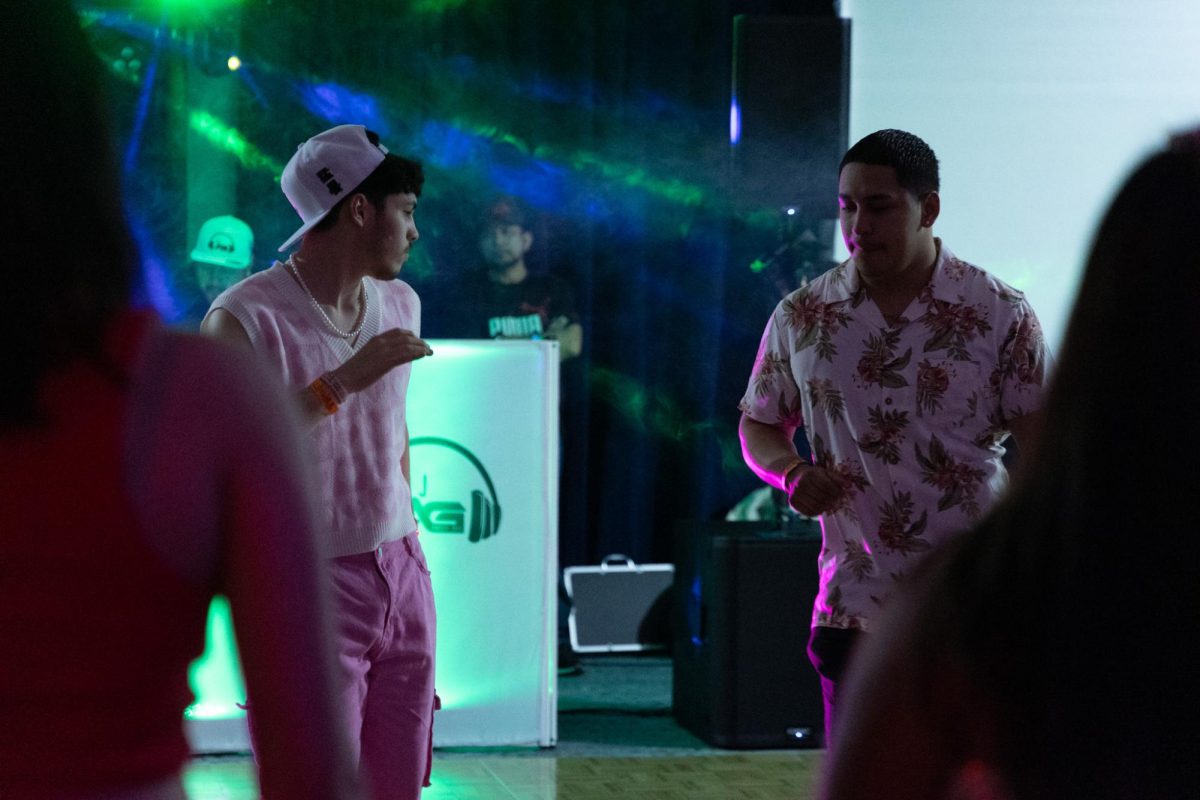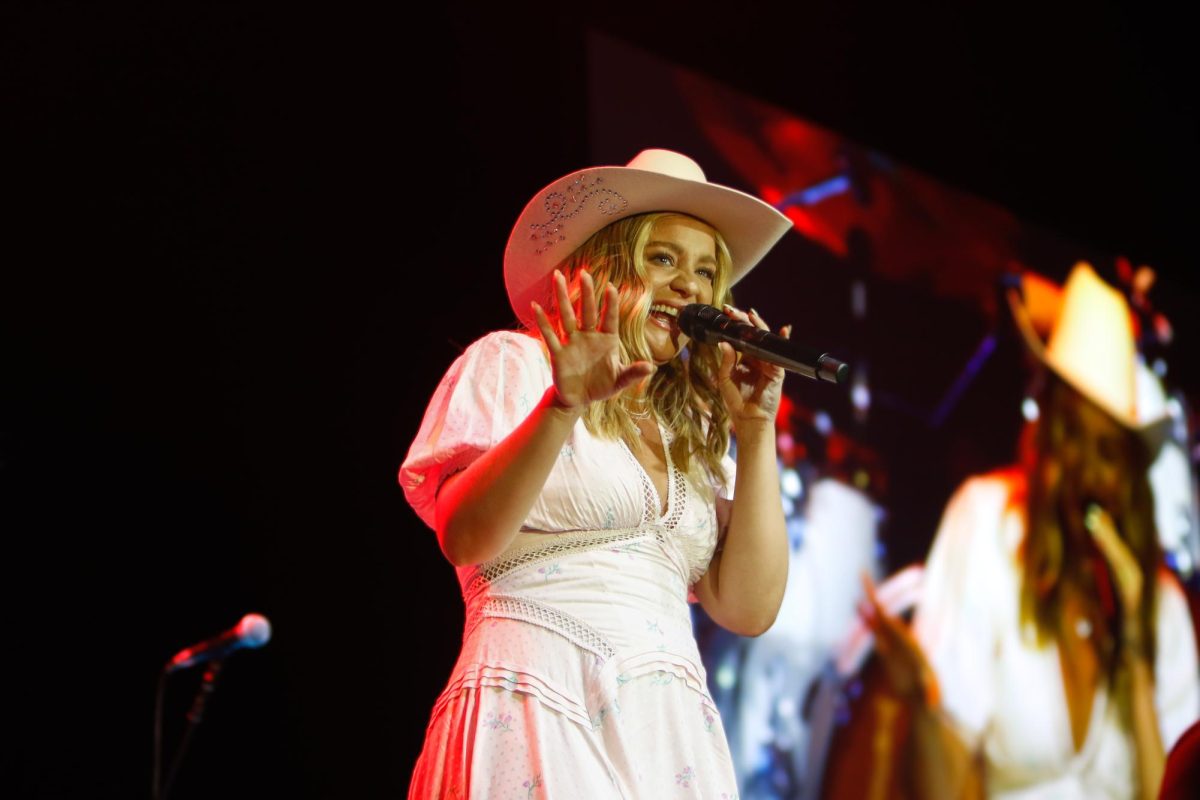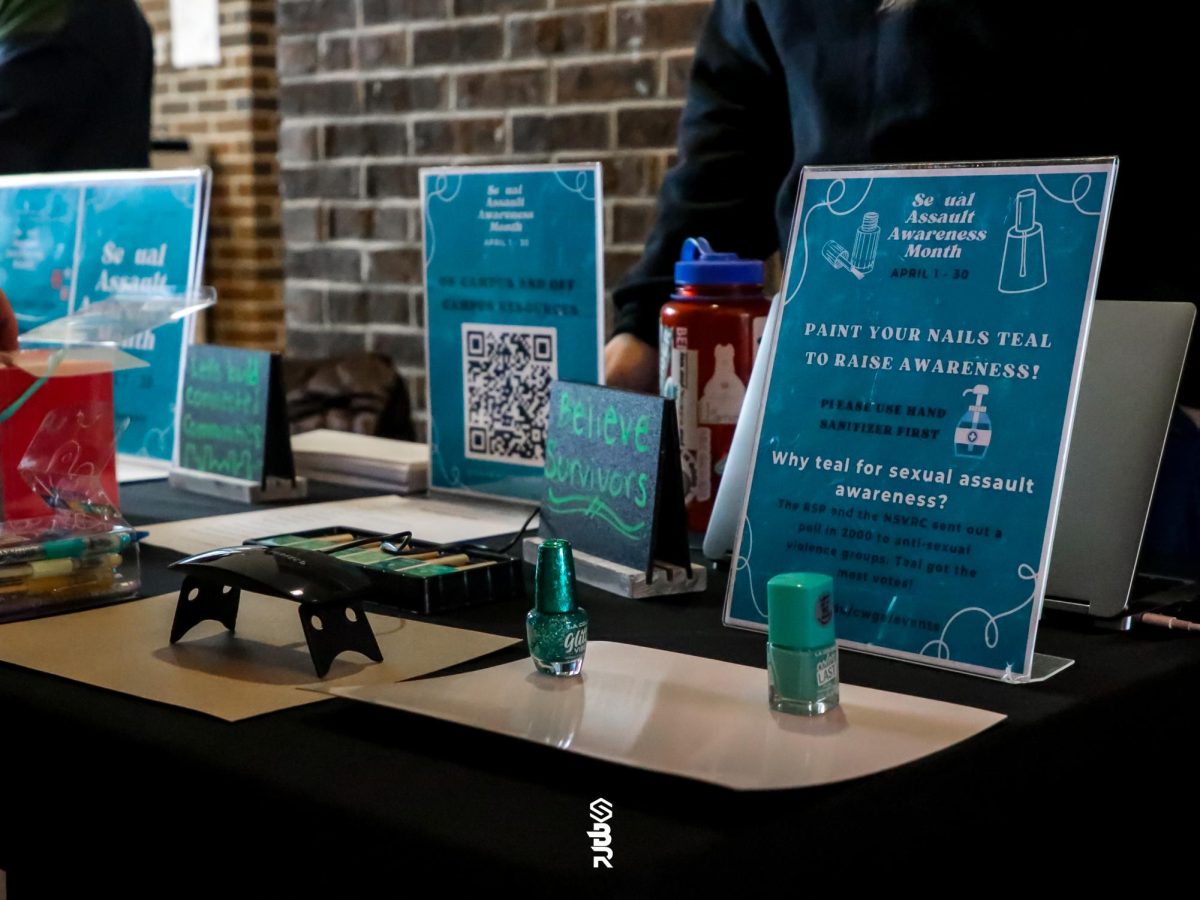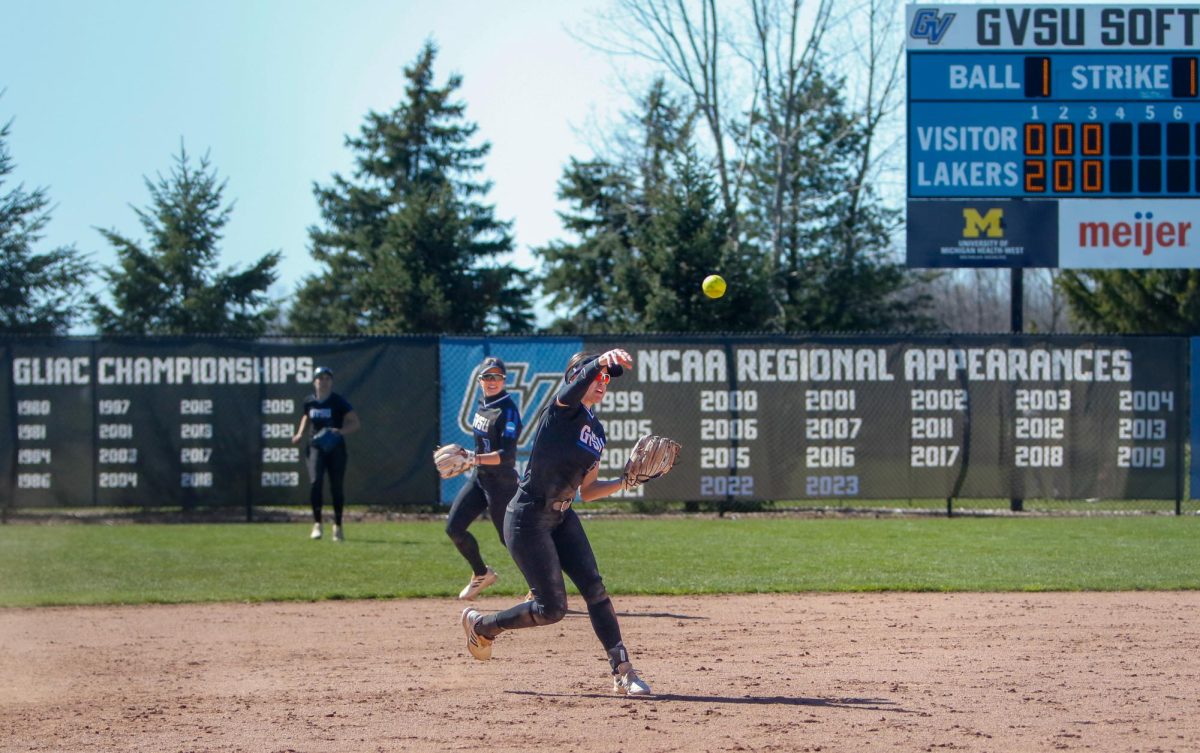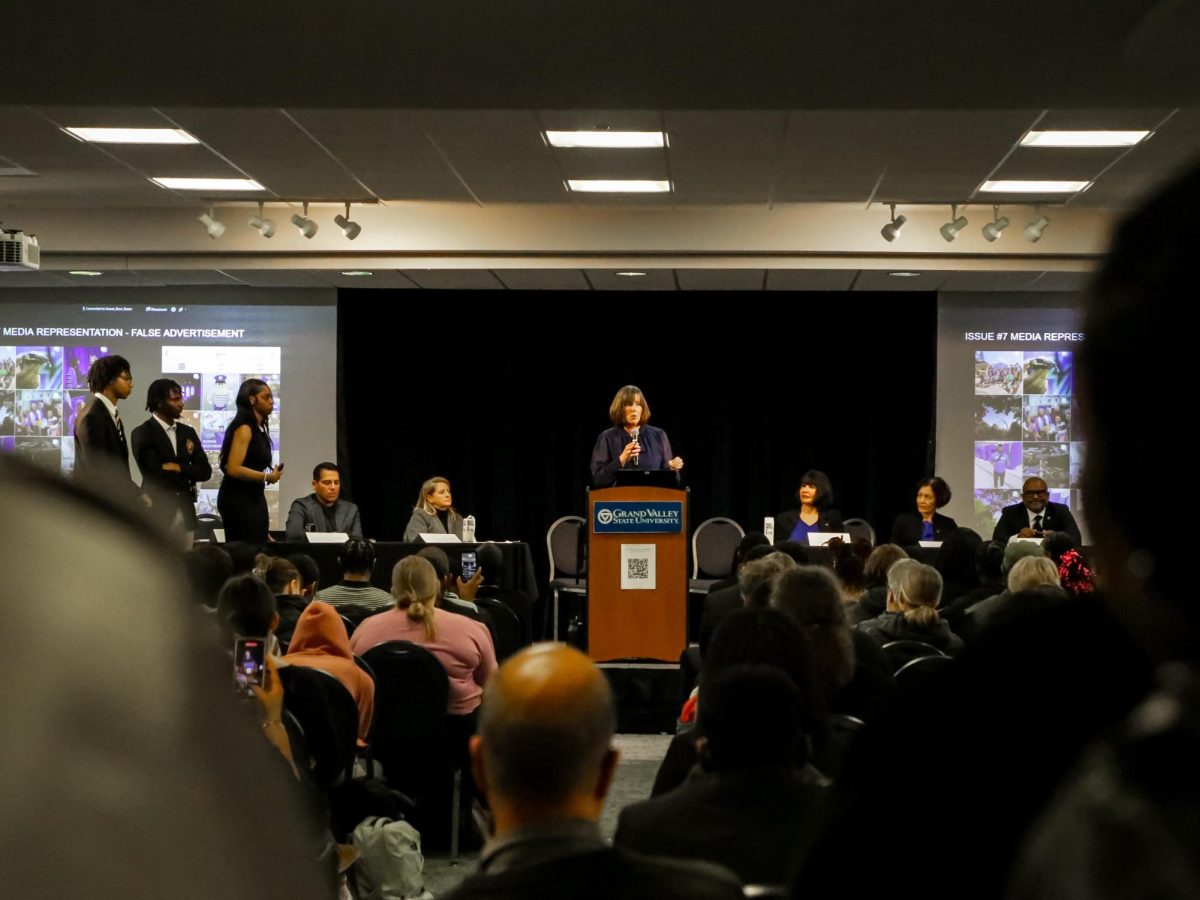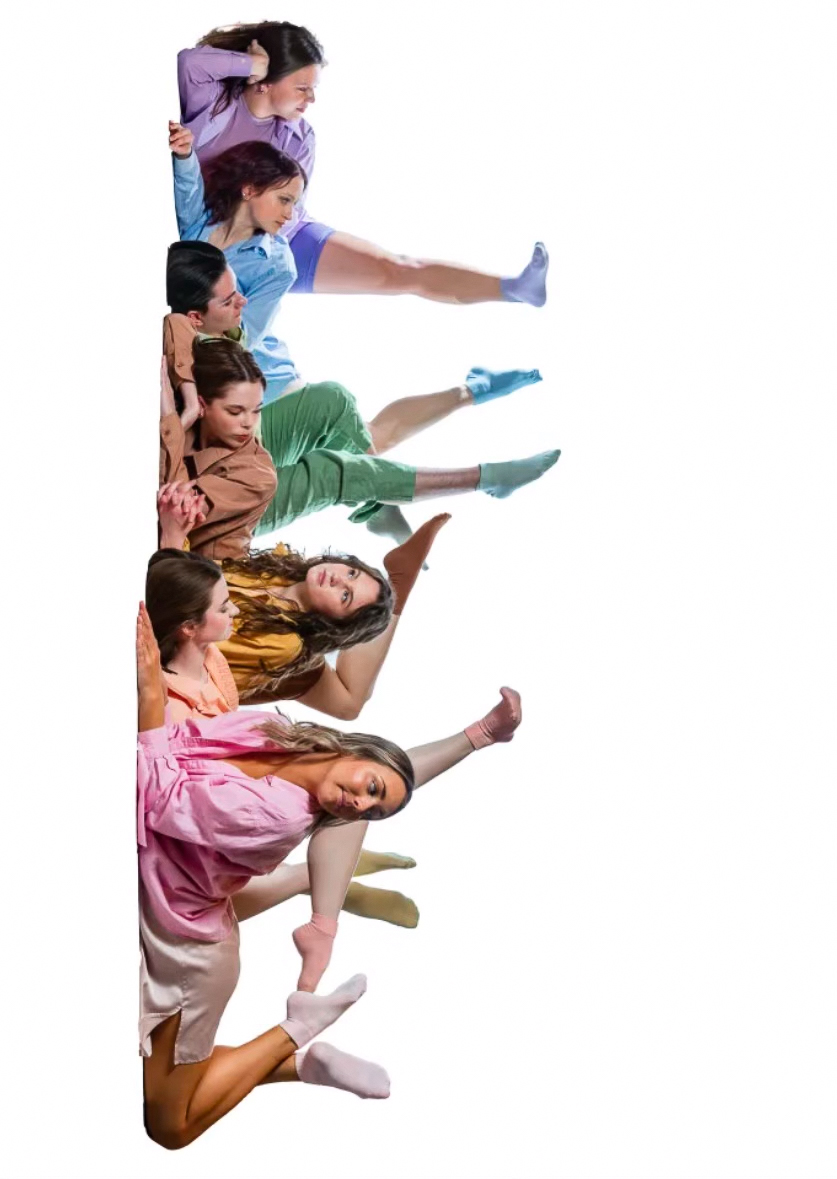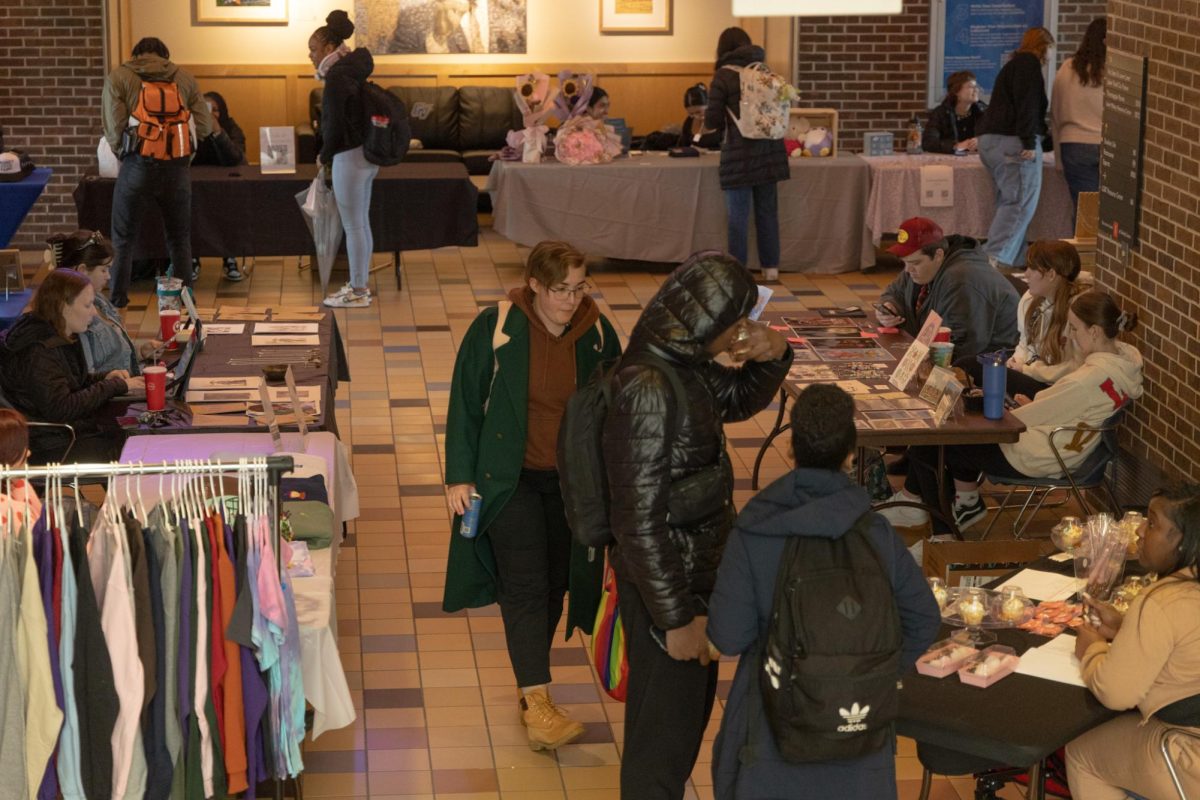History of black feminism

GVL / Brianna Olson Janelle Hobbs
Mar 19, 2015
The Grand Valley State University Women, Gender and Sexuality Studies program and the Women’s Center sponsored a presentation by scholar, author and critic Janell Hobson on Tuesday, March 17 in the Kirkhof Center on the Allendale Campus.
Hobson is an associate professor of Women, Gender and Sexuality Studies at the University of Albany, State University of New York. She gave a talk titled “Black Feminist Imagination: How Popular Culture Influences Women’s History” in which she discussed the role pop artist Beyoncé Knowles plays in modern feminism, the depiction of women in recent films and other portrayals of black woman in art and history.
Beyoncé, Hobson said, represents herself as a “queen” in a way that makes her accessible to a wide audience.
“In short, to play the queen, Beyoncé seeks to make legible the female body through conventional and historical tropes of white beauty and aesthetics,” she said.
Hobson’s view of Beyoncé differs from many feminists who criticize her sexualized image, she said.
“If Queen B signified on a more African queenly image, its power is severely restricted within rigid black nationalist concerns for sexual politics confined to heterosexual and patriarchal standards of womanhood,” she said.
Looking back, Hobson said, engaging black feminism through history requires framing the story.
“What would it mean for the black feminist imagination to move beyond the symbolic power of the queen image and rhetoric to locate a more resistant and decolonized symbol of feminist power,” she said. “Whose history is this?”
Historically, black women have largely been portrayed one of two ways, Hobson said.
“We are presented with dual histories,” she said. “We either dress up like womanhood in an imagined, majestic power of queenly status, or we render her the ultimate victim of slavery.”
This representation appears even in recent films, such as “12 Years A Slave,” which won Best Picture in 2013.
Hobson showed a scene from “12 Years A Slave” in which a black female character is whipped repeatedly. She pointed out that the camera shows her body, but not her face.
“We do become missing, even though our bodies become the focal point,” Hobson said. “There is a way in which the representation of womanhood becomes a trope.”
Hobson also showed an example from the 1993 film “Sankofa,” in which a black woman is transported through time into African slavery and is brutalized by her white captors.
“We get this rich iconography of women in pain, but we don’t really have the narrative,” she said.
The narratives of black women do exist in history, Hobson said, citing the example of Harriet Tubman, who she said has become more icon than woman.
But the stories like Tubman’s must be told in a way that relates to modern people and to youth, she added.
“I think you have to find people where they’re at, really,” she said. “You have to find this thread, this common thread to get people interested.”
To learn more about Janell Hobson, visit her website at
www.janellhobson.com/.







